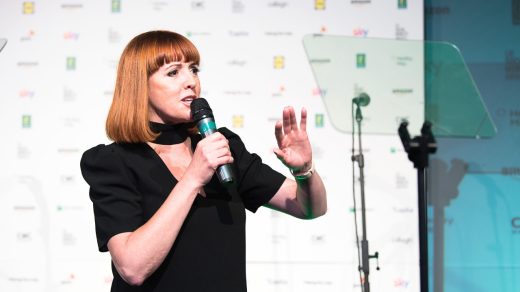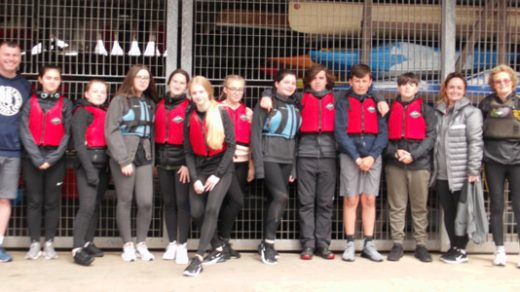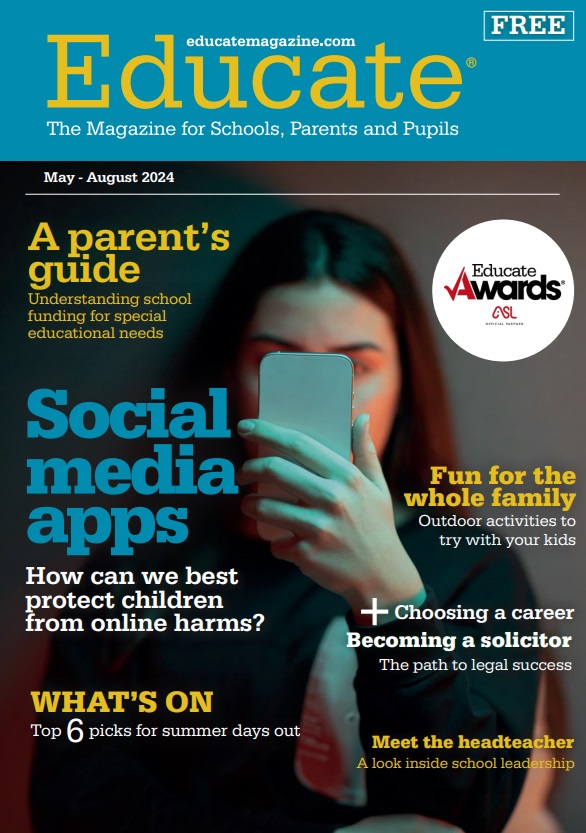Tweet All About It

The social networking site Twitter has come a long way since its inception
in 2006. According to its own figures, the free communication service
has 241 million monthly active users around the world, sending 500 million messages each day.
Through maximum 140-character entries, known as ‘tweets’,
it continues to connect everyone from members of the public, celebrities
and politicians to the press, charities, private sector businesses and authorities. It’s no wonder then that the education sector is among those realising the potential of Twitter too, with schools on Merseyside
being no exception.
During the Educate Awards 2013, which recognised schools, staff, pupils and projects across 16 categories, the use of social media and Twitter in particular was a common theme amongst the worthy shortlists.
Calderstones School particularly succeeded during the glittering ceremony at Liverpool Cathedral, as it picked up the Innovative and Creative Literacy Award for strategies including its @CaldiesLiteracy Twitter account. With more than 1,000 followers, the account has allowed the school to share information and engage with students to exceed their literacy targets.
The school’s Twitter usage also secured a runner-up place alongside Holly Lodge Girls’ College for The Communication Award, which was presented to the winner Roscoe Primary School for its “21st Century-style” communicating via Twitter and blogging.
Meanwhile Merchant Taylors’ Schools’ targeted use of social media and online resources was also among the factors recognised by judges when the schools won the Career Aspiration Award.
It’s evident that schools across the area are not only using Twitter to inform wider communities of what they are doing in real time each day, but also as a tool for sharing information and a source for new ideas.
Educate magazine recently took to its own Twitter account to engage with Merseyside schools over how and why they too have become involved in the global phenomenon, and was given an insight into the way the facility is being utilised for educational purposes.
Primary and secondary schools alike agreed that Twitter is not only a great outlet to publicly celebrate current achievements of the school and pupils and to share news with followers, but to also keep track of previous pupils’ progress and success.
Christ the King School tweeted: “We use it to spread our good news with the community and to keep in touch with ex-pupils and families too.”
Whilst Childwall Sports & Science Academy responded with: “Yes! It’s a great way to see what pupils have achieved later on in life #achievement.”
The social media tool has also seemingly played an important part in boosting communication between the schools and their pupils’ parents and carers, with the ability to publish messages instantly proving particularly effective amongst schools.
For instance, Notre Dame Catholic College sent a tweet highlighting: “It is a great way to communicate information, particularly school trips where parents can follow the trip almost ‘live’.”
Gone are the days, it seems, when pupils set off on a trip or residential visit and parents had to wait until their return to hear about the activities that had taken place. Sian York, a music teacher and assistant headteacher at Calderstones School who oversees its Twitter usage, says: “We took Year 7 to Paris and we set up a Twitter account to post pictures and keep parents updated.”
Meanwhile a Twitter account set up by the school to accompany a Barcelona trip kept parents up to date with posts such as: “Should be back by 2pm, pick up at school please.”
This ability to use multiple accounts for targeted audiences and specific purposes, as well as monitoring longer term, more general accounts, is something that Calderstones in particular has been putting to good use.
Sian adds: “We have a school Twitter account but it has expanded into various different ones. We’ve now got a community one, a charity one and a sport one through which the parents are updated. Plus we have a teaching one and a learning one which has caught on across the school.”
So what difference is Twitter making to teaching, learning and day to day life in the classroom?
An online article published last year by the Department for Education (DfE), which itself has a Twitter account, says: “Technology has a transformative power. Many sectors, such as medicine, manufacturing, entertainment, travel, finance and retail have been changed fundamentally by the effective and innovative use of technology. These sectors now operate in ways that are unrecognisable to those of a century, or even a decade ago.
It adds: “Evidence links the use of technology to improvements in learning and outcomes for pupils. Schools with a well-developed vision for learning and which lead and manage their use of technology in support of this are more likely to reap benefits.”
Ian Parry, vice principal at Liverpool Life Sciences UTC says Twitter “provides a platform for true collaboration”, and this is an idea which is also actively being explored by Whitefield Primary School in order to benefit teaching and learning.
Not only does Whitefield use Twitter to share links to its school radio station – ‘Radio Whitefield, Nothing But the Best’ – but headteacher Nadine Carroll says: “It’s ideas sharing mostly, that’s why we use it. We’re in touch with quite a few schools in the North East and we tend to share each other’s stuff. We’re also in touch with schools in London, schools from all over the country really and a couple of schools from abroad in Australia
and America.
“We have also used it to ask for things. One time I just put ‘are there any community groups who’d be willing to come in and read?’, and from that we have two volunteers from an organisation called Regenda. They are community apprentices and they come in and work a whole day for free every Wednesday.”
Sian York also highlights an event called Teach Meet North West, which saw Calderstones School welcome representatives from schools across the country to share educational ideas after the event was coordinated via Twitter.
As within any industry, using and monitoring new facilities and services prompts new questions of how much they impact on time and resources. However, despite such varied interaction and a use of multiple accounts, some schools regard Twitter as a time saver.
According to Sian York, Twitter’s ability to instantly communicate messages to a mass of followers is enabling it to work “better than some other forms of communication”.
Nadine Carroll adds: “People think that it takes up all your time and capacity, but actually we just do it as part of what we do. If something really good happens in the school we would tweet that, and we try to use Twitter in the way that it was designed to be used – to follow what you’re doing during the day.”
As schools continue to develop their own presence on Twitter, along with their use of the social media site as a teaching and learning resource, the network’s potential to help provide additional guidance to pupils when it comes to their own internet safety is also being recognised.
Social networking, be it through Twitter and Facebook or online gaming, on home computers through to smartphones and tablets, is becoming increasingly widespread. However the website of charity Childnet International, which works to help young people stay safe online and promotes the internet as a positive tool for children when used properly, says: “Activities that use new technologies can make a really valuable contribution to the wider school curriculum and to children’s learning.
It is essential for educators to recognise the benefits of technology and understand the many different ways that children and young people are using internet enabled devices, especially in the home and within social environments.”
Ian Parry from Liverpool Life Sciences UTC does consider the use of Twitter to be having a positive impact on students’ e-safety at the specialist science and health care school for 14 to 19-year-olds, as the awareness of social networking pages being public profiles is raised.
He says: “The key message our students believe in is that ‘every day is an interview’. This awareness extends to the students’ online presence and understanding.
“Twitter sits alongside a number of other online strategies and students’ holistic approach to e-safety is professional and consistently reviewed and updated.”
Looking to the future of Twitter in Merseyside schools, it seems that as the potential of the social network is gradually being realised it continues to be adopted more and more.
For Sian York at Calderstones, the online tool is said to have been key throughout the past year and has “just continued being an absolute craze”.
As Whitefield also continues to explore the benefits offered by Twitter, Nadine Carroll adds: “You can only find out something’s potential by using it so we started using it, then we started to see its potential and so we increased using it. That’s just the way it works isn’t it.
“It’s not going to solve the world’s problems but it’s good for sharing information, sharing knowledge, and it’s good for networking and collaborating on that level.”




